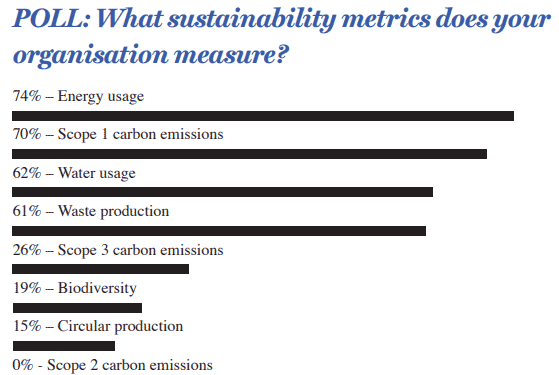The SupplyManagement.com website, a publication of The Chartered Institute of Procurement & Supply (CIPS), a Euro version of the Institute of Supply Management (ISM) in the US, is recently out with a special report, titled The Roadmap to Sustainability.
In that interesting report, Amanda Wood, director of sustainability at UK aerospace firm BAE Systems, lays out five guidelines for successfully developing an Environmental, Social and Governance (ESG) program.
Highlights of Wood’s advice can be found below.
1. Decide what matters
The first thing is to establish what factors are important to the organization, Wood says, noting that Sustainability is a huge field, and a vast number of issues could fall under this single umbrella.
BAE started by trying to get its arms around everything – but later realized that was asking too much of the business.
So Wood recommends working out what is most important and aligning that to your corporate strategy.
Wood also recommends companies talk to your suppliers and customers at every stage, even if you don’t have all the answers yet.
2. Integrate small steps
In general, Wood says, companies tend to set lofty ambitions but then face the challenge of how to start breaking this down into manageable pieces.
What are the progress steps? It pays, Wood says, to remember that supply chains are volatile, and many suppliers will be working hard just to keep their lights on, and now you want to add sustainability on top of that.
Also, be mindful about how you move forward; start small and do the small aspects well, then move on to the next piece.
3. Support SMEs
Wood says to acknowledge that SMEs are part of the sustainability solution because it’s tempting to focus eorts on a reduced set of strategic suppliers and forget that smaller businesses are also critical.
BAE has 19,000 suppliers, and about 3% of those make up 80% of its emissions. It would be easiest to target that 3%, Wood says, but then SMEs often have great ideas though not always the capacity to innovate, so they might need some help.
Remember: everyone is working towards the same goal.
4. Create buy-in
.There’s no silver bullet when it comes to sustainability. For BAE, Wood says, it has been about staying close to the company’s stakeholders, about understanding what they’re going through and how BAE can help.
Wood says BAE doesn’t want to be a burden on what they’re doing. It helps to take the time to understand where suppliers are at, what their pressures are and how firms can help them grow while making progress. “Have a service mindset,” Wood writes
(See More Below)
|
CATEGORY SPONSOR: SOFTEON |
|
|
| |
| |
|
|
5. Focus on the common good
Collaboration is competitive. If you do something better than someone else, you will get noticed for it. But in the main, Wood says, we are all in this together, all part of the same ecosystem.
So, she asks, why build an independent solution instead of co-creating a common approach? We should be focusing on common solutions that make business easy for BAE and for our suppliers, she concludes.
Good advice.
The report also includes some interesting survey data collected earlier this year by CIPS from its members. That includes data on which Sustainability metrics companies track, as shown in the chart below:

Source: CIPS
As can be seen, measuring energy consumption tops the metrics list, while just 26% of companies are tracking scope 3 emissions coming from their supply chains.
The report is available here: The Roadmap to Sustainability
.
Any reaction to these thought on AI? Let us know your thoughts at the Feedback section below.
|